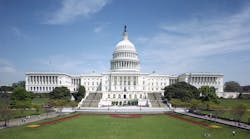Fleet owners and all others who depend on our nation’s highway infrastructure to make a living don’t need to be told that America’s roads and bridges are desperately in need of repair not to mention modernization.
But fixing this massive problem before it further harms the overall U.S. economy will remain an uphill battle until politicians and the general public also come to see how urgently this issue that touches all parts of our nation and which should easily cross all party lines needs to be tackled.
That’s the contention of transportation expert Ken Orski, editor/publisher of Innovation NewsBriefs, in a recent piece he penned on why the infrastructure crisis has to be perceived more widely as a reality that can no longer be ignored.
“Many within the transportation community firmly believe that the [infrastructure] crisis is real,” stated Orksi. “They point out that many of our roads, bridges and transit systems are approaching the end of their useful life and are badly in need of repair, reconstruction and modernization. They are convinced that without an ambitious program of investment ---beyond the billions that already are being spent---the transportation infrastructure will continue to deteriorate, rendering great harm to the nation's economy. They find it difficult to understand why politicians and the public do not necessarily share the same sense of urgency. They tend to blame themselves for doing a poor job of ‘educating’ the public about the catastrophic consequences of inaction.”
While noting one positive— “activists already are strategizing on how better, i.e. more convincingly, to present the case for higher transportation spending in the next transportation bill”—Orski adds that on the other hand, “proponents of more robust spending ignore the political realities.”
He rightly points out that with “mounting deficits and the shadow of a $16 trillion debt hovering over all fiscal decisions, Congress is not about to vastly increase spending on transportation.”
What’s more—and what’s worse—is that “concern about deteriorating infrastructure has failed to resonate with the electorate during the election campaign. The promise of transportation spending as a job creator proved to have little political credibility. Nor did the presidential candidates care to mention transportation in their recent debate on domestic priorities, despite pleas by stakeholder groups to include infrastructure on the political agenda.”
Orksi contends that “infrastructure crisis believers” who “decry this supposed ‘indifference’ or ‘short-sightedness’ on the part of the politicians and the public” do not grasp that most people are simply not convinced by “dire warnings of collapsing bridges and crumbling roads.”
And he argues the public is “not sure that all of the billions of dollars that the federal government already devotes to transportation are spent wisely, nor that more money will make the transportation system perform any better.” On top of that, they believe the “desire to greatly increase investment in infrastructure must be tempered by the overriding imperative to get the nation's fiscal house in order.”
Looking beyond the current MAP-21 highway bill, Orski maintained that the “fiscal and political climate in the next few years will make the job of convincing the skeptical electorate to support higher transportation spending even harder. “Funding constraints will continue to make it difficult if not downright impossible for Congress to commit hundreds of billions of federal dollars in a single legislative package, regardless of which party controls the purse strings.
“Unwilling to raise fuel taxes,” he continued, “Congress is likely to embrace short-term bills as a convenient way out of the dilemma. Short-term authorizations such as MAP-21 will require only modest transfers from the general fund ---especially if states are willing to step in with increased contributions of their own. On the other hand, a six-year bill would require an injection of nearly $90 billion in general revenue.”
In Orski’s view, the bottom line is that “regardless of the outcome of the November elections” no one should expect to see a boost in federal transportation spending. “Indeed,” he noted, “minor reductions in discretionary programs (TIGER, New Starts) are likely if automatic year-end spending cuts under sequestration are not avoided.”



